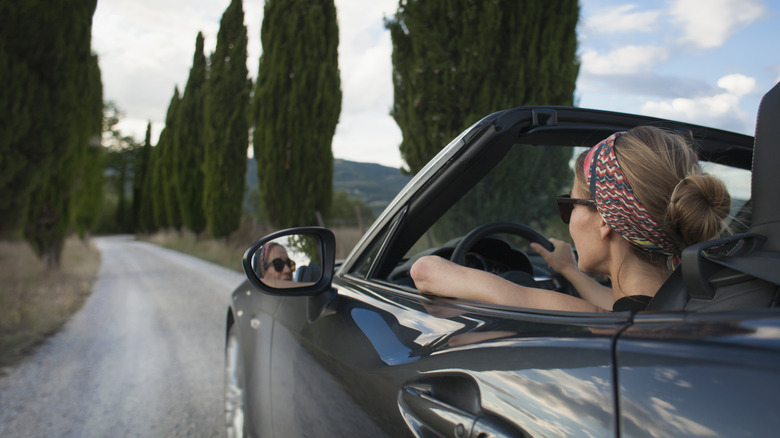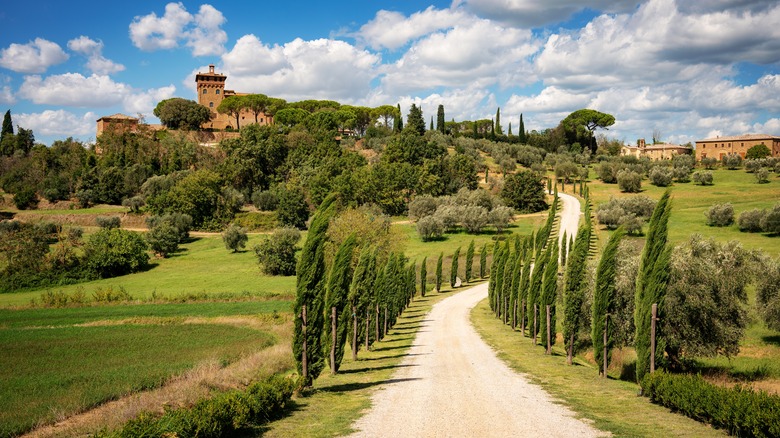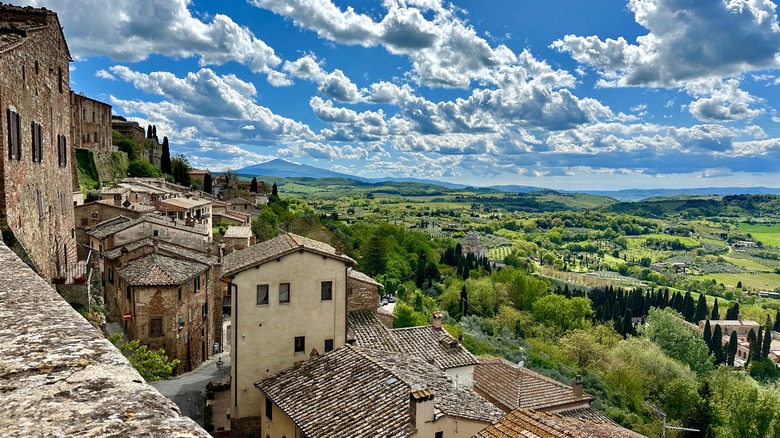The One Region In Italy Where Rick Steves Strongly Suggests Renting A Car
Picture this in your head: You're driving through the Italian countryside, with the top down and the wind in your hair. You're passing rows of cypress trees as a hill town comes into view in the distance. Perhaps it's Cortona with its pretty shops full of wine, soap, olive oil, and pottery covered in lovely designs. Perhaps it's travel pro Rick Steves' favorite underrated hill town, Volterra, full of ancient Etruscan structures, or Montepulciano and its wonderful wines. This is the area of Italy known as Tuscany, and Steves suggests on his website this is a great spot to rent a car.
While trains can be great for exploring a number of different cities in Italy, there is something about Tuscany's roads that just spark the imagination. "Although driving in Italy isn't for the faint of heart, in Tuscany it's a joy on super-scenic small roads — and the best way to lace together the views, villages, and vineyards," says Steves. "Trains link some villages, but stations are likely to be in a valley a few miles from the town center. Even buses can't make it up, up, up into some hill towns — some of the steepest villages have escalators serving car parks at the base of their cliffs." There are a few things to know about how it all works, but it's worth studying up so you can experience the beauty of Tuscany on your own time.
What to know about renting a car and driving in Tuscany
Once you've chosen a rental car, Steves suggests visiting some Tuscan hill towns. He says, "The biggest dilemma facing a first-timer in Tuscany is how in Dante's name to choose from the many hill towns vying for your attention." That said, we learned on a recent visit while driving an eight-person van, hill town parking can be tough. If you rent a larger car, park at the bottom and walk up because the streets can often be too narrow. Bring your reusable water bottle to fill at the free fountains you'll find around each town.
These small towns have something new (or rather, old, or even ancient) to see around every corner, and you might not want to leave early to make a bus or train time. Especially if, as Steves says, you'll have to walk a few miles to get there from the station in some circumstances. Having more time also lets you stay for the evening "passeggiata" through the cobblestone streets, where the locals promenade around the main square around dusk. Steves recommends that visitors "join in and imagine the countless peasant backs that bent so many centuries ago to set these ancient, weathered stones into simple perfection."
Having a car here gives you so much freedom and the scenery is beyond beautiful, as you can see above. It provides the opportunity to let yourself imagine what it would be like to live there. There are, however, some road rules to know.
Signs, roundabouts, colors, and more
One thing to note is that Italian drivers can be a bit aggressive, but don't try to speed up to keep up. You might not see as many speed limit signs as you do in America, but you will see some telling you that your speed is being tracked. (They're blue signs that say, "controllo elettronico della velocità.") Stay the course, and unless you see a sign that prohibits passing, let the faster driver pass to avoid looking like a tourist. Don't be afraid of roundabouts. Cars inside usually have the right of way and if you miss your exit, just go around again. If you happen to be driving between November 1 and April 30, you're required by law to carry tire chains or have snow tires, so ask your rental place.
As far as signs, stop signs are the same as ours. You might see an unfamiliar blue circle with a red border and a slash through it. That means no parking, while an "x" in the middle is no stopping. A white circle with two cars and a red border means you cannot pass. A red circle with a white bar means do not enter. If you see it and go in anyway, you'll get a fine. A yellow diamond with a white border means cars entering the street must yield. If the same sign has a black slash, you must yield. Be sure to follow these rules to stay safe and avoid fines on your trip around Tuscany.


